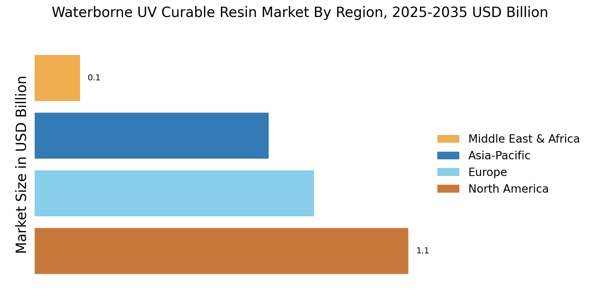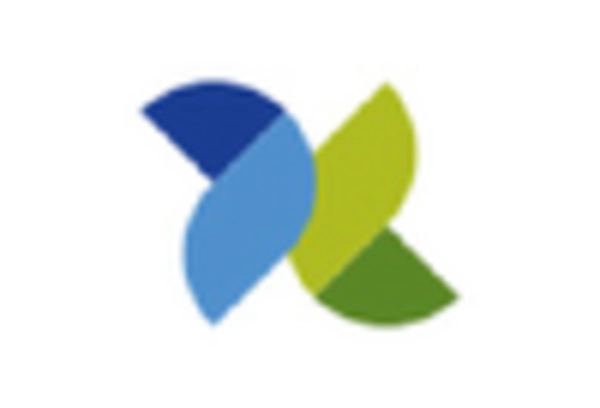Regulatory Compliance
Regulatory compliance is a significant driver in the Waterborne UV Curable Resin Market. Governments worldwide are implementing stringent regulations regarding VOC emissions and environmental safety, compelling manufacturers to transition towards waterborne solutions. Compliance with these regulations not only ensures market access but also enhances brand reputation among environmentally conscious consumers. The demand for waterborne UV curable resins is likely to rise as industries such as automotive, construction, and packaging seek compliant alternatives to traditional solvent-based products. This regulatory landscape is expected to propel market growth, with estimates suggesting that the market could reach a valuation of USD 1.5 billion by 2027.
Technological Innovations
Technological advancements play a pivotal role in shaping the Waterborne UV Curable Resin Market. Innovations in resin formulations and curing technologies are enhancing the performance characteristics of these products. For instance, the introduction of new photoinitiators and additives is improving the curing speed and adhesion properties of waterborne UV curable resins. This has led to their increased adoption in various applications, including coatings, inks, and adhesives. The market is expected to benefit from ongoing research and development efforts, which are likely to yield more efficient and versatile products. As a result, the market is anticipated to expand, with projections indicating a potential increase in market size by approximately 15% over the next five years.
Sustainability Initiatives
The increasing emphasis on sustainability within the Waterborne UV Curable Resin Market is driving demand for eco-friendly products. Manufacturers are increasingly adopting waterborne UV curable resins due to their lower volatile organic compound (VOC) emissions compared to traditional solvent-based systems. This shift aligns with global environmental regulations aimed at reducing air pollution and promoting sustainable practices. As a result, the market is witnessing a surge in the development of innovative formulations that meet both performance and environmental standards. The market for waterborne UV curable resins is projected to grow significantly, with estimates suggesting a compound annual growth rate (CAGR) of around 8% over the next few years, reflecting the industry's commitment to sustainability.
Growing End-User Industries
The expansion of end-user industries is a crucial factor influencing the Waterborne UV Curable Resin Market. Sectors such as automotive, electronics, and packaging are increasingly adopting waterborne UV curable resins due to their superior performance and environmental benefits. For instance, the automotive industry is utilizing these resins for coatings that require durability and resistance to chemicals and UV light. As these industries continue to grow, the demand for high-performance materials is expected to rise, further driving the market for waterborne UV curable resins. Projections indicate that the automotive coatings segment alone could account for a substantial share of the market, potentially exceeding USD 500 million by 2026.
Consumer Preferences for Eco-Friendly Products
Consumer preferences are shifting towards eco-friendly products, significantly impacting the Waterborne UV Curable Resin Market. As awareness of environmental issues increases, consumers are actively seeking products that align with their values. This trend is prompting manufacturers to develop waterborne UV curable resins that not only meet performance standards but also adhere to sustainability criteria. The growing demand for green products is likely to encourage innovation and investment in the development of advanced formulations. Market analysts suggest that this shift in consumer behavior could lead to a substantial increase in market share for waterborne UV curable resins, potentially reaching a growth rate of 10% annually as more companies respond to these evolving preferences.


















Leave a Comment